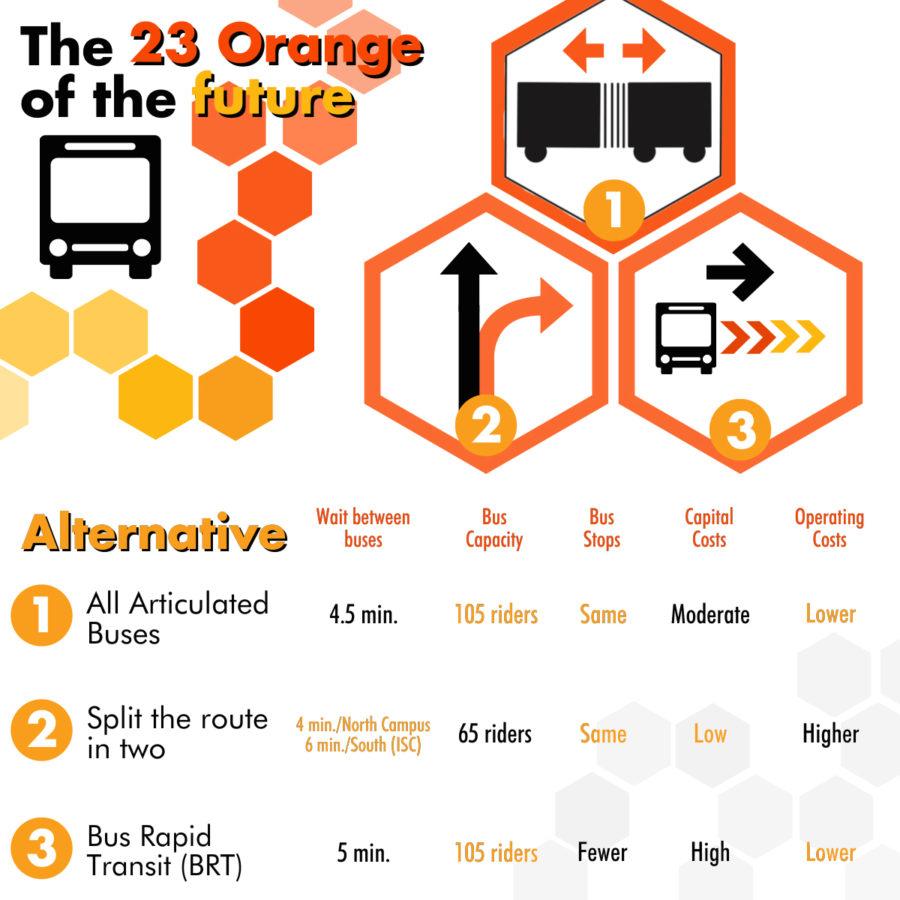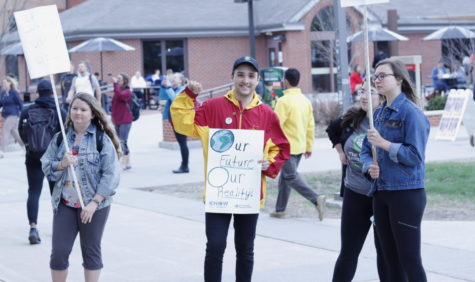CyRide No. 23 Orange Route provides alternatives
January 23, 2015
CyRide is calling for students to vote on three alternatives to the existing No. 23 Orange bus route.
CyRide held an open-house forum in the Maple-Willow-Larch commons area Jan. 22 to give analysis on the No. 23 Orange route alternatives from. CyRide is offering three options for the 23 route: an articulated buses alternative, to split the route into two, or a bus rapid transit system.
The current No. 23 Orange route uses two buses or an “extra bus” at the most congested stops along the route.
“During the main hours, in the morning, lunch and at dinner time there is a lot of chaos,” said Lindsay Sturtevant, a freshman living in Willow Hall.
The No. 23 Orange route is currently running at capacity and ridership is rising 2-3 percent per year. CyRide has made the decision that adding more 40-foot buses is not a solution to the problem.
“40 percent of riders come from the commuter lot and 40 percent come from MWL,” said Bill Troe, a SRF consultant hired by CyRide to help with alternative solutions. “The remaining 20 percent is what comes from campus locations.”
The high amount of student traffic coming onto campus is causing problems on the route. The most prevalent problems include an increased time on bus stop waiting, standing room only on the buses and more vehicles on campus.
The first solution given is the articulated bus system. The articulated bus system proposal suggests buses run the same route as the current 23 route, but will call for fewer buses. Eight buses would be used to accommodate current and future demand and all of the buses on the route will be articulated [bendy buses].
“We currently have two [articulated] buses,” Troe said. “A grant to CyRide may pay for about four more buses.”
This means that Cyride may only be required to purchase four buses with current funds, instead of all eight.
The second proposal would split the 23 route in two. New routes would run both north and south of Lincoln Way. An “express” route would run from the Iowa State Center lot and Vet Med, while a route starting at Maple-Willow-Larch would continue to run the current 23 route, but would terminate at Maple-Willow-Larch. Both routes would have fewer stops, but this plan has the highest operating costs.
“Split route has good qualities, but will be just as busy as the current route,” said GSB Senator David Moore. “I think we are spoiled a little bit with the orange route, but thats OK sometimes.”
Though Iowa State does not have highest enrollment in the nation, the 23 Orange route has one of the highest riderships in the country.
Implementing the split route calls for a new Maple-Willow-Larch boarding area, two additional buses and more time between buses, but it allows the circulator to go a shorter distance and carry fewer passengers on them.
The Bus Rapid Transit alternative proposes signs be erected, informing commuters when buses will be coming to that stop along with other additional information. The Bus Rapid Transit route has a low operating cost, but will cost the most money up front.
“The Bus Rapid Transit is the best option in my mind,” Moore said. “I think it’s a great idea and could be looked into more.”
With the Bus Rapid Transit alternative route, the route would end along Osborn drive and riders wanting to travel through the central campus area will need to transfer to a short circular route.
“We do our best with extra buses but there needs to be some kind of change,” said Anasia Sturdivant, a CyRide driver.
Sturdivant, who has been driving for CyRide since the fall of 2010, said there has definitely been an increase in passengers over the years.
Students have the opportunity to learn more, vote and provide input on which route they think will work the best. Student voting is available on the CyRide website until Feb. 2.

















